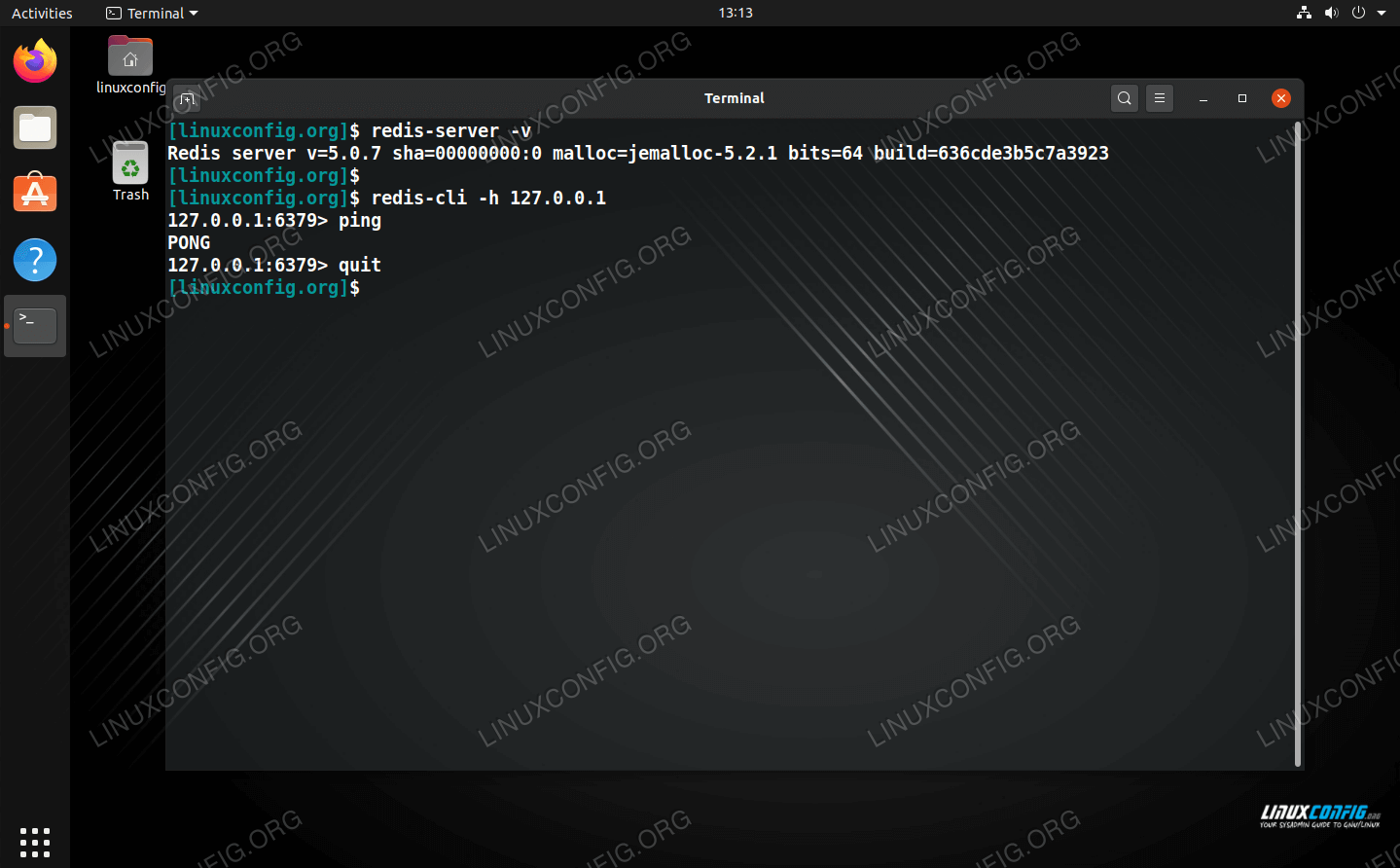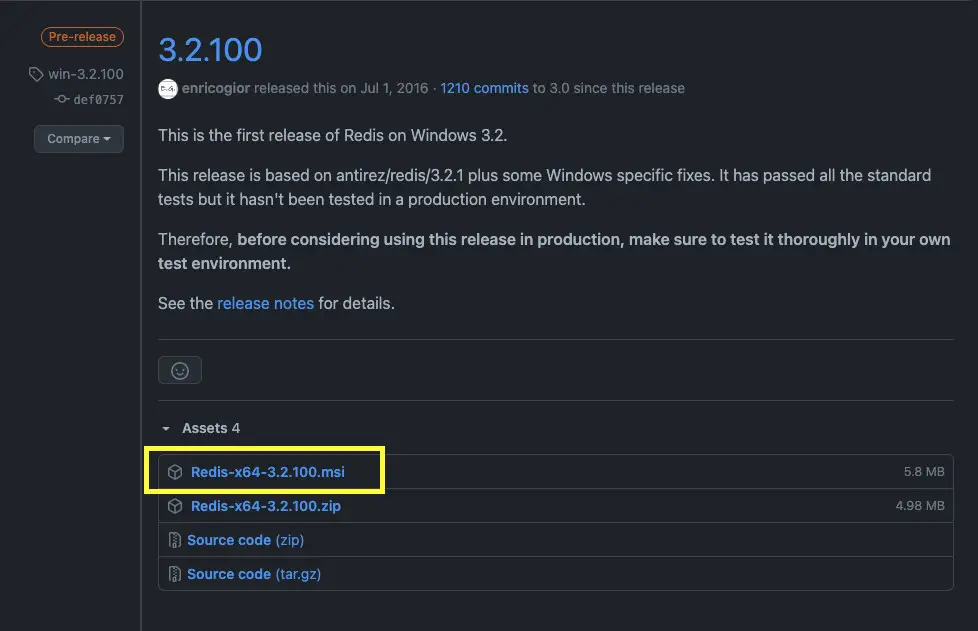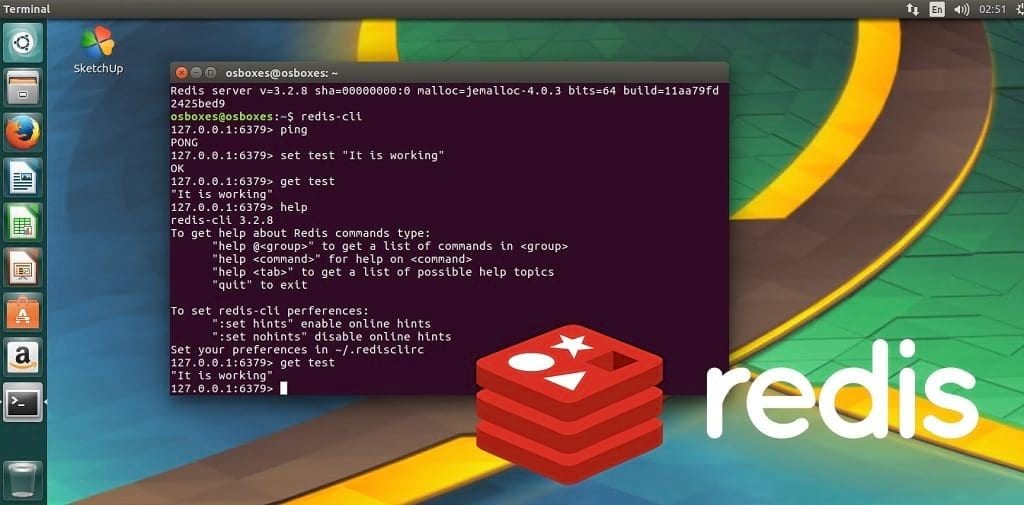
- #INSTALL REDIS UBUNTU HOW TO#
- #INSTALL REDIS UBUNTU INSTALL#
- #INSTALL REDIS UBUNTU UPDATE#
- #INSTALL REDIS UBUNTU ARCHIVE#
- #INSTALL REDIS UBUNTU UPGRADE#
Ro0R/Cj19W9RuDdNSq2Yoqx0f5H4B6/Fs/Y7AdkJkvppiW8ZxftCFjdl7zA2sP8AĮ9fdIWAcBGekrqGTg3AjisaZ50O61k96N+0sPGI4yqqT57A144SYF7aLM0GliUpy $ openssl rand -base64 100Ī similar output to below will be shown. Generate a random password using the openssl command. In this step, you will configure Redis server with a password so that only authenticated clients are allowed. Save and exit (using Ctrl-x) Securing Redis server with password Set the logfile directive to the correct path. Set the pidfile directive to the correct path. If you are setting up a local Redis server you can skip this step. Make sure Redis server listens on all IP addresses so other servers can reach. $ sudo nano /etc/redis/nfĬhange the supervised setting to systemd as we are using a systemd based distribution. Open the Redis config, nf with your favorite editor. The first step in Redis configuration is to copy the distribution configuration so we have a backup: $ sudo cp /etc/redis/nf /etc/redis/nf_original-20200703 # recommended that you replace the following lines with "ProtectSystem=full". # redis-server can write to its own config file when in cluster mode so we Paste the following and save and exit (using Ctrl-x) ĮxecStart=/usr/local/bin/redis-server /etc/redis/nfĮxecStartPost=/bin/sh -c "echo $MAINPID > /run/redis/redis-server.pid" $ sudo cp nf /etc/redis/Ĭreate a file to be used for systemd to manage the Redis server service. $ cd /tmp/redis-stable/Ĭopy the distributed configuration file to the redis configiration directory. $ sudo mkdir /etc/redisĬhange directory to the source. $ sudo chown -R redis:redis /var/run/redisįinally, create a directory for configuration files. $ sudo chown -R redis:redis /var/log/redisĬreate a directoy to hold the pid file.

$ sudo chown -R redis:redis /var/lib/redisĬreate a directory to hold the logs. $ sudo cp redis-server redis-cli redis-benchmark redis-check-aof redis-check-rdb /usr/local/bin/Ĭreate a data directory for Redis server, change the ownership to redis user, and make sure only redis user and redis group are able to read and write. $ cd /tmp/redis-stable/srcĬopy executable files to /usr/local/bin so they are in the system path. $ sudo adduser -system -group -no-create-home redisĬhange directory to build artifacts i.e. This user doesn't need to login and doesn't need to have a home directory.
#INSTALL REDIS UBUNTU INSTALL#
Once the build is successfull you can continue the Redis install process.įirst you need to create a user for Redis server. Rm -rf redis-server redis-sentinel redis-cli redis-benchmark. Make: Entering directory '/tmp/redis-stable/src' $ make MALLOC=libc BUILD_TLS=yesĪn output like below will be displayed: cd src & make all $ cd redis-stable/Ĭompile Redis server using the make command with two options, one definining the malloc library, and the other enabling TLS support. $ tar -xzvf Ĭhange to the newly created directory.

#INSTALL REDIS UBUNTU ARCHIVE#
$ wget Įxtract the archive using the tar command. $ sudo apt-get install -y build-essential pkg-config libssl-devĭownload Redis' latest stable version as follows. The first step in the Redis build process is installing the dependencies required to complete it.

#INSTALL REDIS UBUNTU HOW TO#
How to build Redis server in Ubuntu 20.04 The output will look like this: Reading package lists.
#INSTALL REDIS UBUNTU UPGRADE#
Now with the following command, you will upgrade outdated packages.
#INSTALL REDIS UBUNTU UPDATE#
Let's prepare our server for our setup after connecting, you will update the local package index and upgrade any packages that are outdated.įirst, we run the apt-get update command as follows: $ sudo apt-get updateĪn output similar to the following (cut for brevity) will be displayed, and indexes will be updated. In this tutorial, you will learn how to install the Redis server on Ubuntu 20.04 LTS, as well as how to secure it with a password and TLS encryption and perform some redis server config. This makes it fast and there for very popoular among key-value databases. Though it stores some data on the disk that's unsuitable for RAM, it reconstructs it back into memory once the computer restarts. Unlike traditional applications, Redis always modifies and stores data on the main computer memory.

As traditional database systems have major issues scaling some types of workloads, Redis was created to adress those concerns, working as a store and a cache at the same time. Redis stands for Remote Dictionary, and was founded when its founder Salvatore Sanfilippo wanting to improve his startup's scalability. With its rapid response, it is mainly used in the caching layer. Redis is a fast, versatile in-memory key-value store.


 0 kommentar(er)
0 kommentar(er)
